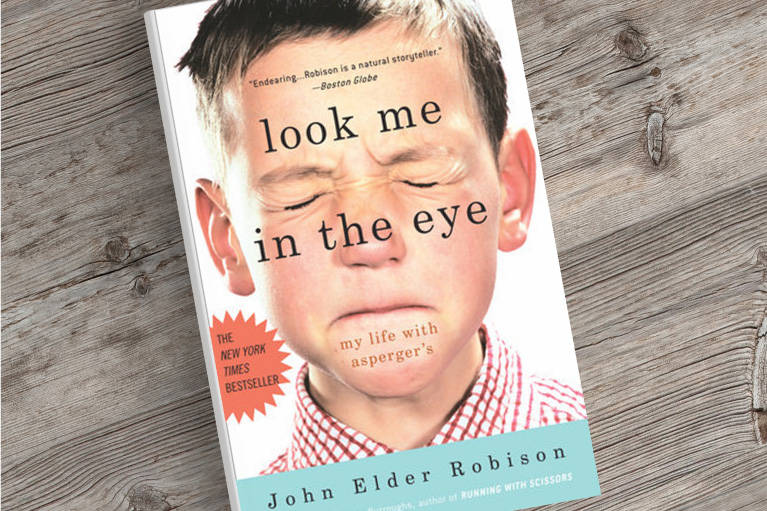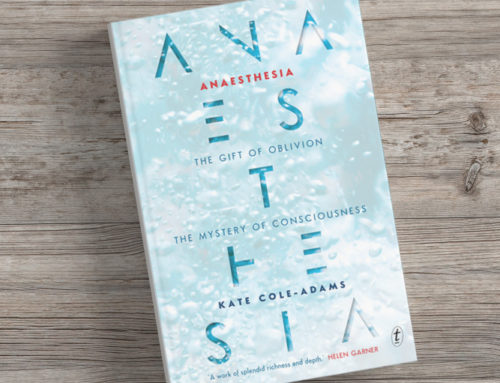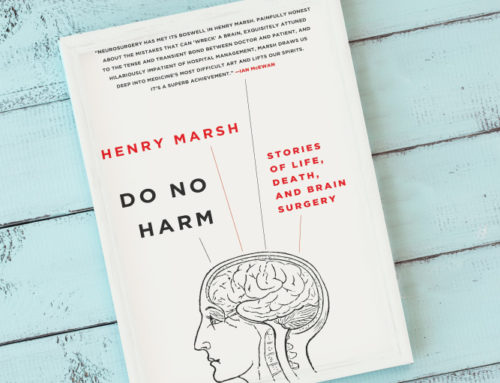“So I’m not defective. In fact, in recent years I have started to see that we Aspergians are better than normal! And now it seems as though scientists agree: Recent articles suggest that a touch of Asperger’s is an essential part of much creative genius.” ~ John Elder Robison, Look Me in the Eye – My Life with Asperger’s
This week will be a welcome departure from the usual as we discuss the book, Look Me in the Eye – My Life with Asperger’s, by John Elder Robison. Next Sunday, January 29th, we will be recapping how the previous few weeks have gone following our start to the “Year of the Best You – Cultivate What Ignites You”. I am really looking forward to both discussions.
If you know me, or have been checking in on my blog, you may know that I am an advocate for Twitter and actively engage on it. Through Twitter, I found @DoctorsBookClub, which is an online book club “designed primarily for physicians but welcome to all”. I love the premise of an online, social-media based book club that is flexible, inclusive and interesting. They select a book every other month, that “will enrich us as doctors and as humans, and enhance our practice of medicine.”
One of the founders of Doctors Book Club, Dr. Steve Christiansen (@eyesteve), graciously contacted me about being the moderator for the upcoming discussion on Look Me in the Eye. I so enjoyed this memoir and thought I would share more about it as a post. What has made this experience even more enriching is the author of the book, John Elder Robison, has even joined in the discussion on Twitter @johnrobison and plans to check in as we pose questions about the book January 27th – 29th.
[title size=”2″ content_align=”left” style_type=”none” sep_color=”” margin_top=”40px” margin_bottom=”” class=”” id=””]Look Me In The Eye[/title]As the inside cover of the book describes, Look Me in the Eye “is the moving, darkly funny story of growing up with Asperger’s at a time when the diagnosis simply didn’t exist.” In his memoir, John brings us on a journey throughout his life, for the most part before he had a diagnosis that he subsequently described as a “revelation” (p. 236) and “was a tremendous relief” (p. 238) once he recognized he had Asperger’s.
John says:
“I had spent most of my life listening to people tell me how I was arrogant, aloof, or unfriendly. Now I read that people with Asperger’s display inappropriate facial expressions” (p. 237-238).
I will never bring justice to the richness of John’s story in a blog post, but I reflected on what John overcame throughout his life and wanted to share some thoughts. One thing that spoke to me was how relatable John was, and is, even without his life-changing diagnosis of Asperger’s. John describes a childhood of feeling alone and bullied; being misunderstood despite his high intellect and dropping out of high school; family of origin issues including abuse, addiction and mental illness challenges. Unfortunately, too relatable for many people in society.
The other aspect is that of the idea of a label or diagnosis. As a physician, I completely recognize they are beneficial because they should allow for resources and accommodations that might not otherwise be offered. On the other hand, I believe labels may perpetuate the notion that we should treat people differently as opposed to accepting people for their uniqueness and what makes them different. John grew up feeling like a misfit, however, he was talented beyond most of our abilities.
I think John’s juxtaposition on this sums it up:
“Asperger’s is not a disease. It’s a way of being. There is no cure, nor is there a need for one. There is, however, a need for knowledge and adaptation on the part of Aspergian kids and their families and friends” (p. 5).
Recently in medicine, a much needed movement has emerged on ‘watching our language’. It was transformative for John to know he ‘has’ Asperger’s, and John affectionately uses the term Aspergian, however, for me at the core John is a person who has Asperger’s. Just like you might have diabetes (not is a diabetic) or have schizophrenia (not is a schizophrenic). It is just my thought on equalizing the humanity that unites us all.
[title size=”2″ content_align=”left” style_type=”none” sep_color=”” margin_top=”40px” margin_bottom=”” class=”” id=””]What is Asperger’s Syndrome?[/title]Austrian psychiatrist Hans Asperger first described features of children with Asperger’s trait in 1944 but it was not added to the Diagnostic and Statistical Manual of Mental Disorders (DSM-IV) until 1994 as a separate disorder. Some of the symptoms include social difficulties, with normal or above normal intelligence, restricted range of interests, repetitive behaviours and potential clumsiness related to motor delay. The diagnosis is far from straightforward and until recently used to be considered separate from autism within Pervasive Developmental Disorders. Now, Asperger’s falls within Autism Spectrum Disorder (ASD) in the most recent Diagnostic and Statistical Manual of Mental Disorders (DSM-V).
Diagnosis usually involves a multidisciplinary approach and becomes more difficult the older a person is, although it is usually diagnosed during childhood. However, given the complexity of ASD and range of symptoms, the diagnosis may be overlooked early in life.
This is just a brief overview and many resources are available, some of which I have included below under Resources & Cited Works.
[title size=”2″ content_align=”left” style_type=”none” sep_color=”” margin_top=”40px” margin_bottom=”” class=”” id=””]A bit more about John Robison[/title]I feel like I got to know John through his storytelling, and then through reading more about him on his website and connecting with him on Twitter. In his earlier years, given his talents and interest in machines, he worked on the sound equipment for bands including KISS and then went on to create a business restoring and working on specialty vehicles. John is now actively involved in important advocacy work around autism and neurodiversity. He is the Scholar in Residence and Co-Chair of the Neurodiversity Working Group at William & Mary in Williamsburg, VA. Neurodiversity is a great term and in part at the university they, “recognize that these conditions [like autism , Asperger’s, OCD, ADHD, Tourette’s, and dyslexia] are ways of being, not diseases, and they are best met with acceptance and support at whatever level is appropriate”.
John is also a multi New York Times bestselling author where his books include, along with Look Me in the Eye, Be Different, and Raising Cubby. Throughout John’s book, Look Me in the Eye, he renames people in his life as he has an aversion to calling people by their given names: “I have decided to name you Slave,” I said, looking at my mother. “And your name is Stupid,” I told my father.” I couldn’t help wonder, “what would he rename me?”
[title size=”2″ content_align=”left” style_type=”none” sep_color=”” margin_top=”40px” margin_bottom=”” class=”” id=””]In closing…[/title]I want to thank Dr. Steve Christiansen (@eyesteve) for including me in such an enlightening book discussion. I also want to thank Erika Christiansen (@itssodesign) in advance for her beautiful design work around the upcoming discussion questions January 27th – 29th. Please tune in to the conversation on Twitter @DoctorsBookClub and @SaraTMD even if you don’t get a chance to read the book.
And finally, I want to thank John Robison for opening up his life to us so we could appreciate what life was like for him growing up without a diagnosis of Asperger’s and how that diagnosis transformed his life and especially his contribution to society. Thank you for being a beacon of light to so many people who are touched by Asperger’s and ASD.
Thanks to Sara Taylor, a Family Physician from Alberta, Canada, for contributing this book review and for moderating this month’s book club. Sara blogs at saratmd.com and can be found on Twitter at @SaraTMD.
[title size=”2″ content_align=”left” style_type=”none” sep_color=”” margin_top=”70px” margin_bottom=”” class=”” id=””]Resources & Cited Works[/title]Robison, J.E. (2007). Look Me in the Eye. Crown Publishers: USA.
Robison, J.E. (2008). Today Show.
Robison, J.E. (2011). The Globe and Mail – What’s it like to live with Asperger’s?.
Burroughs, A. (2002). Running with Scissors. St. Martin’s Press: USA.
Barahona-Corrêa, J.B. & Filipe, C.N. A Concise History of Asperger Syndrome: The Short Reign of a Troublesome Diagnosis. Frontiers in Psychology. 2016;6:2024.
National Institutes of Health – Autism Spectrum Disorder








Thanks for choosing my book for your next review. Let me know if you have any questions.